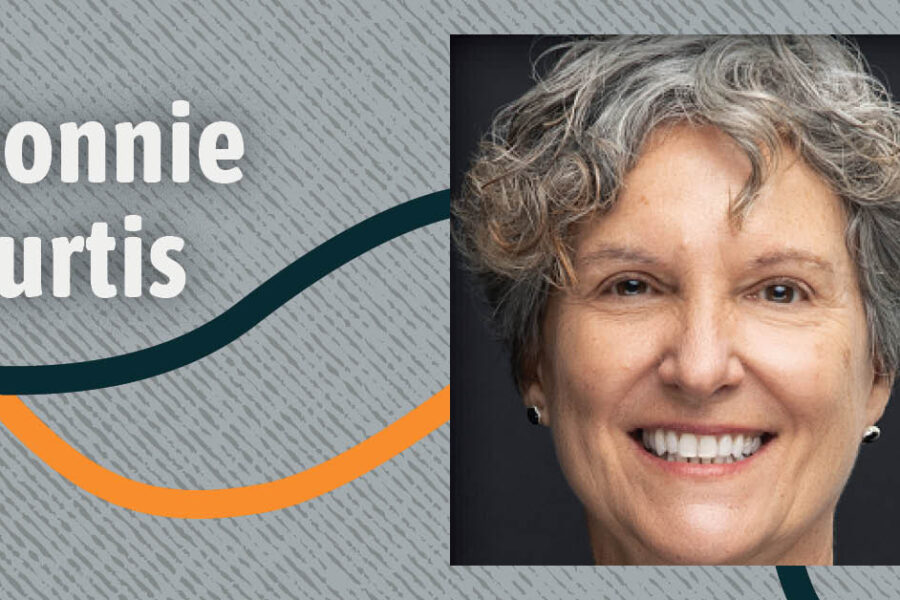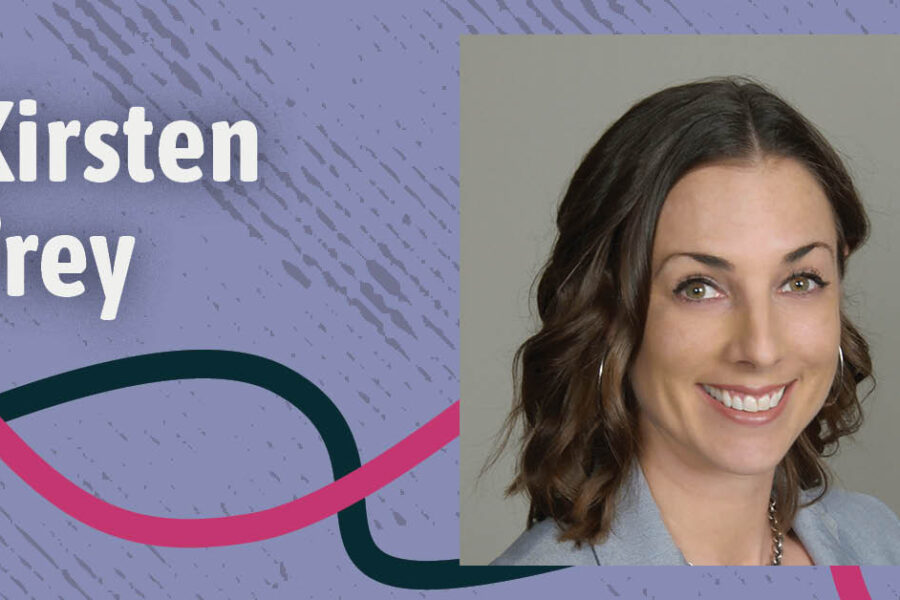“We need beauty,” says Marietta Patricia Leis ‘72, ‘75 (Antioch Los Angeles, BA in Psychology, MA in Clinical Psychology). “It helps us make sense of our world.” And there’s much about the world that we don’t always understand or pay attention to—to our own peril, and to the planet’s. That’s why this multidisciplinary artist based out of New Mexico uses visual art and poetry to explore and communicate her concern with the preservation of the earth. She centers the natural beauty of the environment in her largely abstract paintings and other artworks. And this year, she is putting together a solo exhibition at The Taos Art Museum at Fechin House that she hopes will inspire people to connect with nature.
For Leis, a graduate of Antioch’s undergraduate and graduate psychology programs in the ‘70s, the stories she wants to tell are always centered in a sense of place. Her work as a psychologist, teacher, and artist have braided into a practice that invites viewers to explore the external and internal landscapes we all have access to.
For example, she has created entire exhibits concerning air and trees. In these installations, the works—in mediums ranging from photographs on silk or metal to paintings on wood, sculptural paintings, and the written word—document that together we breathe and share oxygen, that we are guardians of it, and that the trees are canopies for all of humanity.
This is art with an important message, but it is also beautiful and inventive, with a sense of play and an abstract intelligence. It is powerful. Each work is an expression of the story of this one, particular artist. And it’s a story that began here at Antioch, with a particular program—the Primal Institute—that would open academic doors, ultimately leading to life as an artist.
A Home for Psychology Within the Antioch Network
In the 1970s, Antioch embarked on a project of expansion, partnering with innovative educators across the country to bring high-quality, learner-centered education to people who otherwise were not being served. As part of the University Without Walls movement, Antioch eventually opened over thirty campuses that came to be called “The Antioch Network,” all centered around and sharing accreditation with the original Antioch College in Yellow Springs, Ohio. This constituted a series of innovative approaches and experiments to support non-traditional students and working adults in obtaining a higher education. One of the big innovations—which remains to this day—was that students could receive credit for non-classroom learning, such as prior work experience and job training.
This was perfect for Leis, who when she came to Antioch was in her thirties and had a background in acting and dancing and was teaching a course in prepared childbirth at a Los Angeles hospital. Leis attended Antioch College through Antioch West and its partnership with the Primal Institute, a Los Angeles clinic based around the modality of Primal Therapy and founded by its inventor, Dr. Arthur Janov. (Antioch’s partnership with the Primal Institute ended in the late ‘70s, but the Institute still offers therapy, and Antioch still educates California therapists through its MA in Clinical Psychology programs at Antioch Los Angeles and Antioch Santa Barbara.)
Primal Therapy is a trauma-based psychotherapy based around the idea that it is the repressed pain of childhood trauma that causes neurosis—and that it can be accessed and treated through non-cerebral therapies, including the famous “primal scream.” (Janov published a bestselling book with that as its title.) Leis, however, had been introduced to Janov’s work through his writings about birth trauma, which she referenced in her childbirth class.
She soon met Janov, who inspired her to train as a therapist, recommending that she pursue a degree in psychology and get clinical licensure. Leis attended Antioch Los Angeles and was able to take many of her classes at the Primal Institute. She graduated in 1972 with a Bachelor of Arts in Psychology. Then she went to the newly-founded Antioch Los Angeles and attended its MA in Clinical Psychology, graduating in 1975.
She credits Antioch for offering her this revolutionary program which gave her as an older person the opportunity to graduate with a college degree. She felt validated and enabled to pursue this career while working full-time and being a single mother of two small children.
In a very tangible way, the degree supported her career: she went on to serve for eleven years as the Assistant Director of The Primal Institute. A creative seed was also planted for Leis at this time. “I realized that original thinking was valued somewhere, that this is the creative process,” she says. “It didn’t feel that different from being a creative artist, it was just a different expression of being a creative person.”
Shifting from Psychology to Art
After graduating with her degrees and building a career at the Primal Institute that enabled her even to save money for her children’s future education, she felt a desire to devote more of her time to art. The value of a life connected to art was something she was familiar with in part because her mother was a commercial artist. Additionally, her grandparents, who had immigrated from Italy, lived in a house full of original art and books on the subject.
While Leis had been pursuing her education and career in other fields, she had in her spare time often experimented and spent time looking at art. So eventually she decided to try to make this her career. She applied to a Master of Fine Arts degree in Studio Art at the University of New Mexico and was accepted. She says completing her MA in 1985 and MFA in 1987 was instrumental in being able to take this next step. “I felt very well prepared. The progression of legitimacy and accreditation was just so important to my life,” she says. Her time at Antioch prepared her for these studies. “Antioch offered programming where you could be a free thinker and spread your wings,” she says. “This was expected at the studio art program, along with pushing your limits.”
Moving to Albuquerque exposed her to a fascinating regional arts culture—and it also offered affordable housing. Leis graduated with her MFA in 1985, and for the next ten years she worked as an art teacher. All the while she was building her portfolio, and today she is an internationally exhibiting multimedia artist and poet who still calls New Mexico home. She says that the state provides her with “the right mix of solitude, stimulus, and nature.”
Artistry Inspired by Nature
Exhibitions of Leis’s work have been shown across the United States as well as internationally, in such distant countries as Latvia, Portugal, and Dubai. She works with many different mediums and has seen how different people respond in different ways to all of it. She wants her pieces to have dialogue with each other but also to appeal to as many people as possible. Her ultimate goal as an artist, though, is beauty. “I try for aesthetic beauty,” explains Leis. “Because once people move into that beauty, then they can start thinking of what’s happening with our world. They don’t have to be pulled down by it, but they can be inspired.”
That certainly is true in her latest, upcoming show. This fall, Leis is opening a solo art exhibition with The Taos Art Museum at Fechin House. She says that this upcoming show exemplifies her work as a visual artist.
Nicolai Fechin, whose Taos residence has been turned into this museum, was a Russian artist and, says Leis, a master in his oil paintings, especially portraits. He built the Fechin House and studio himself, hand-carving the doorways, lintels, furniture, and stairways. He eventually left Taos for Southern California, but the house remained and was eventually restored and turned into a gallery.
Leis feels a special connection to the Fechin House, and now her work will be on display there. She plans to tie his love of wood and handcraft into her exhibit. It will include woodcuts that she completed in Northern Finland as well as sculptures that were carved through a burning process. There will be sculptural wall pieces and paintings that embody the love of wood and offer observers a visceral experience.
In some ways this is an expansion on her 2021 show at the Center for Contemporary Arts in Santa Fe that consisted of over one-hundred pieces all considering how to make a calm space. Along with visual artworks, that show presented open areas where people could simply breathe. “The unknowns, fears, and isolation of the pandemic build things up in our minds that we can’t express because we are isolated,” Leis explains. “So we tried to create a sanctuary space.” She wanted slow pace and slow art watching to be central, a place where art enthusiasts could take their time and slowly enjoy the spaces without distraction. These open spaces could stimulate memories, evoking emotion through art.
The Timelessness of Antioch
When she’s not making her own art or traveling, Leis mentors younger artists. Her studio assistants are often students finishing their degrees or starting out as artists. She shows them how to operate day-to-day as professional artists. And she’s not done learning herself. She sometimes takes a class or two when she wants to learn more about a subject that interests her.
She sees the way that Antioch encouraged that restless curiosity—and generosity. And she thinks that Antioch’s interdisciplinary courses offer the opportunity for students to broaden themselves as individuals. “It gives you the opportunity of having so many ideas, and so many opportunities,” she says. “I encourage people to throw themselves into that as much as possible in their college experiences. See how far you can expand yourself.” If they follow in her footsteps, the potential for expansion is broad indeed.



